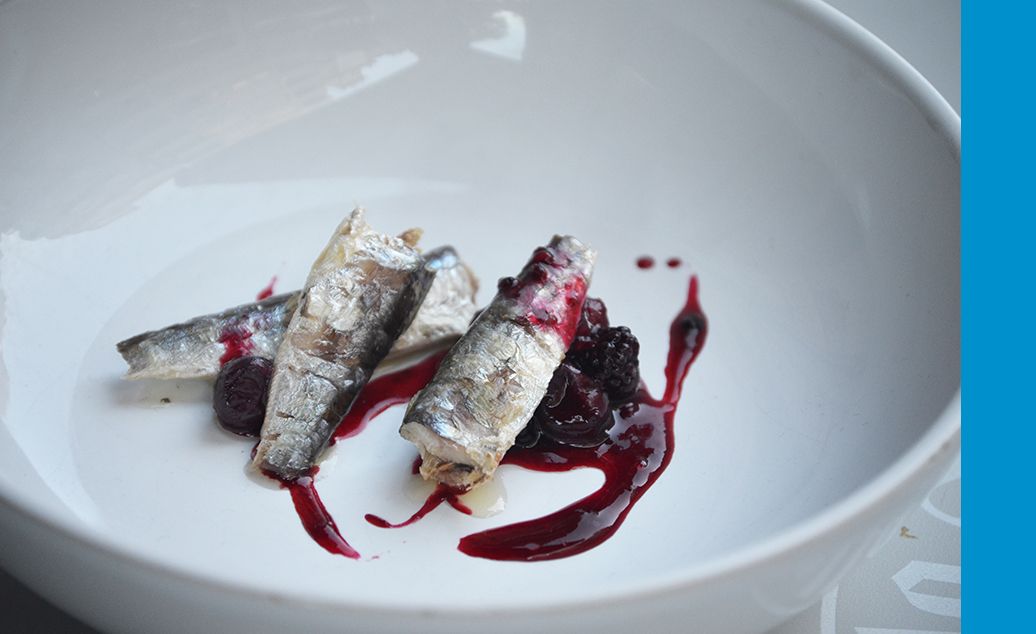Descripción del proyecto



SARDINES


– SARDINES –
Good to know
It’s a salt-water blue fish. Its body is elongated, blue and silver on the sides and belly. Its size is approximately 12 cm. Fishing is possible all along the Spanish coast.
In Galicia they are known as xoubas. For canned presentation, the most common is oil, marinade or tomato sauce as covering liquids.
Nutritional value 100g

Health benefits
High protein content. High content of Omega 3 fatty acids (EPA and DHA) and vitamins B3, B12 and D.
High content of minerals such as calcium, phosphorus and selenium.
Source of vitamin A and E. Source of iodine and zinc.
Highlights
– Alto aporte proteico. Alto contenido en Omega 3. Vitaminas B3, B12 y D.
– Alto contenido en calcio, fósforo y selenio.
– Fuente de vitamina A y E. Fuente de yodo y zinc.
– Sardines with red fruits –

Ingredients
– Sardines in olive oil
– Red fruit compote
– Pepper
Preparation
We open the can of sardines in olive oil, remove the pieces and reserve. Prepare the red fruit compote and add a pinch of pepper.
For the plate, prepare a base of red fruits, place the sardines on it and decorate with a sprout.

SANTIAGO DE COMPOSTELA

Good to know
The history of Santiago de Compostela goes back to prehistoric times, to the castreña culture and to the arrival of the Romans. The turning point is the discovery of the tomb of the Apostle James. From that moment on, pilgrimages to visit his remains increased exponentially to the point of converting the later known as the
Way of Saint James into the most significant historical milestone, on a religious and cultural level, of the Galician Middle Ages.
In fact, the European Parliament recently designated the Pilgrim’s Way to Santiago as the First European Cultural Itinerary, and UNESCO has declared it a World Heritage Site.

Local landmarks
Old Town
In addition to the obligatory visit to the Cathedral, don’t forget the streets and squares of Santiago. The old city of Santiago has been considered a World Heritage Site by UNESCO since 1985.
Palace of Xelmírez
Located in the middle of the Plaza del Obradoiro is the old Episcopal Palace, now the Cathedral Museum.
Franco Street
With a characteristic aesthetics, a large part of the city’s gastronomic offer is concentrated there. This street is the heritage of medieval taverners.
Alameda Park
Let yourself be surprised by the sunset light in this urban park. Gardens, ancient trees, monuments, panoramic views and the famous statue of the Two Marias.
Museum of Pobo Galego
The ethnographic museum of Galician culture is located in the rooms of the convent of San Domingos de Bonaval. Take advantage of your visit to stroll around and enjoy the environment in the San Domingos de Bonaval Park, located on a hillside with unique views.



















